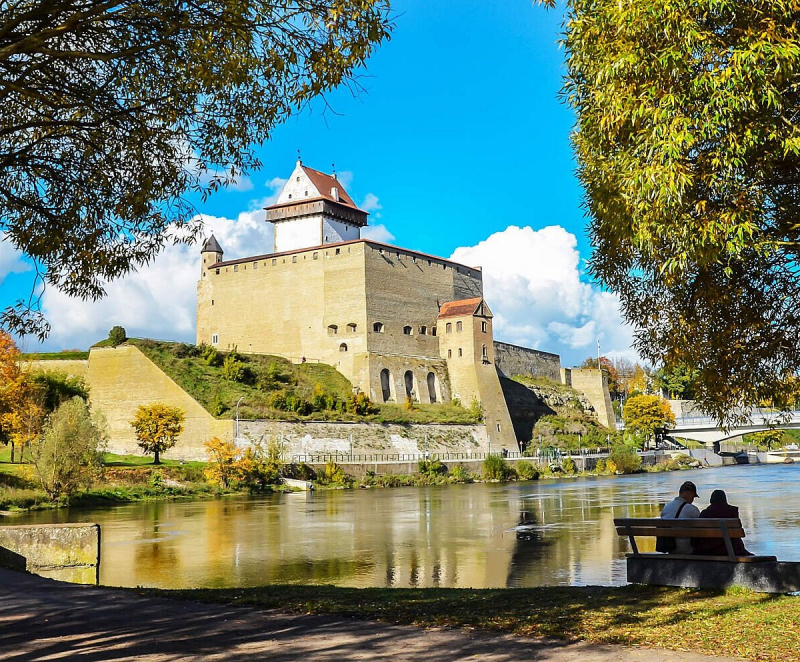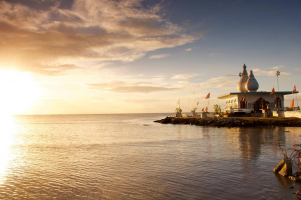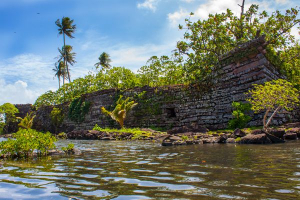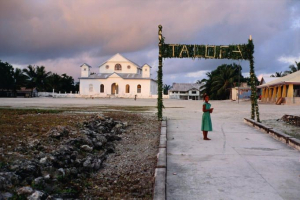Top 10 Most Beautiful Historical Sites in Estonia
Estonia is a genuinely unique European country. The language and culture here are unlike anything else in Europe. Although it is sometimes thrown together with ... read more...Latvia and Lithuania as the Baltics, it is quite distinct. Estonia has more in common with Finland than with any other country. Estonia, like Latvia and Lithuania, was a member of the Soviet Union until 1991, when it won freedom. Estonia, despite its modernity, has a rich history and culture. And after you've visited, you'll probably fall in love with this wonderful nation. Here are the most beautiful historical sites in Estonia.
-
Tallinn, the best-preserved medieval city in Northern Europe, attracts visitors from all over the world with its Gothic spires, winding cobblestone lanes, and stunning architecture. Tallinn Old Town, formerly home to affluent merchants from Germany, Denmark, and beyond, is now loved by both locals and visitors, with restaurants, pubs, museums, and galleries giving much vitality to this ancient city center. This place is one of the most beautiful historical sites in Estonia.
Tallinn, unlike many other European capital cities, has managed to keep its medieval and Hanseatic architecture intact. The Tallinn Old Town was listed as a UNESCO World Heritage Site in 1997, joining the ranks of the world's most well-known sights, thanks to its extremely well-preserved 13th-century city layout. Original cobblestone alleys lined with ancient churches and stately merchant homes, barns, and warehouses, many dating back to the Middle Ages, may be found here.
Tallinn Old Town is a UNESCO World Heritage Site for its tiny cobblestone lanes, lofty spires, and exquisite Hanseatic architecture. Many of the pubs and cafés in the Estonian capital are concentrated here, making it a lively and dynamic district with a mix of local and visitor activity. All of this means that there is a lot to see and do, but deciding what to do may be difficult. Spend a day in an actual medieval setting, and you'll see why Tallinn Old Town has been hailed as magical, captivating, and addicting by so many people.
Location: district of Kesklinn, Tallinn, Estonia

Source: visittallinn.ee -
Hermann Castle in Narva, which is more than 700 years old, has been ruled over by Danes, Germans, Swedes, and Russians over the ages, but today belongs to Estonians. It took on its current form during the Livonian Order's reign from the 14th to the 16th century. After being badly damaged during WWII, the castle was extensively rebuilt in the 1970s and 1980s before opening as a museum with a permanent exhibition depicting Narva's history as well as around a dozen temporary exhibitions.
The full renovation of Narva Castle was finished in June 2020 as part of the 'Opening of the Border Castle Discovery Centre' project, and tourists may now see the east wing of the castle, which was previously closed to visitors. A new permanent display in the castle opened in the summer of 2020, concentrating on the castle's history from the arrival of the first Danes on the banks of the Narva River to the current day. Every fall, the Estonian Institutions Festival takes place in Narva, with the greatest exhibitions from Estonian museums being transported here and remaining open until the end of the year. Concerts and conferences are held in the castle's magnificent vaulted knights' meeting and banquet hall, as well as the slightly smaller hall in the north wing, while the 51-meter-high Tall Hermann Tower offers views of Narva, the Kreenholm factory, and the Russian fortress of Ivangorod across the river.
The Northern Yard, an artists' history center, runs out of the castle's north yard during the summer, while the Western Yard hosts huge open-air events and is a popular spot for free time and wandering. The Linne Herb Garden, which was inspired by Swedish botanist Carl Linne's notion of enriching ancient places by constructing both beauty and practical gardens, is also located here. The only restaurant in Narva to be listed in the White Guide rankings of the finest places to dine in Estonia is Narva Museum's restaurant Rondeel, which is located in the artillery tower in the northwest corner of the Western Yard.
Location: Narva, Estonia

Source: tripadvisor -
Tartu Old City (Estonian: Tartu vanalinn), one of the most beautiful historical sites in Estonia, is Tartu's oldest neighborhood. The Old City is without a doubt Tartu's heart and soul, a maze of small pedestrian lanes that house the city's most remarkable architecture as well as the city's most dense concentration of restaurants and taverns. This is the site of a medieval city, but battles and fires, notably the 'Great Fire' of 1775, obliterated almost all traces of ancient Tartu. The majority of what you see now is its successor, a lovely neoclassical ensemble from the late eighteenth and early nineteenth centuries. Tartu's historic conservation area protects the old town.
A village arose several centuries ago in the marshy plains of the Emajgi River, where the sandy hills that had developed in the Tartu area made crossing the river easier. The presence of the fortress on Toome's foreland goes back to the 5th century, and the finding site of the Kunda culture settlers in Chaste, which falls inside the city's present limits, might extend Tartu's history up to 10,000 years. Tartu was first recorded in Russian chronicles in the year 1030 when Yaroslav the Wise's army conquered the city. Tartu is the oldest city in the Baltic States, according to documented sources.
Tartu Old City has played a significant role in the development of Estonian culture and national consciousness: the first national elite emerged from the local university, the first newspapers and cultural societies, and the first national theatre all began their work here, as did the first national song festival. Many ancient structures, distinctive wooden communities, active cultural and sporting events, societal movements, and countless museums, all with their own narrative to tell, assist to maintain, and carry on traditions that have endured for decades or even centuries.
Lcation: Tartu, Estonia

Source: tripadvisor 
Source: visittartu -
Kuressaare Castle, also known as Kuressaare Episcopal Castle, is a castle in Kuressaare, Estonia, on the island of Saaremaa. Kuressaare Castle is regarded as one of Estonia's best-preserved medieval defenses.
The late Gothic architecture of the castle is characterized by its simplicity of form. The core structure, known as the convent building, is a square structure centered on a central courtyard. In the northern corner, the so-called defense tower rises 37 meters (121 ft). In the 1980s, a defense gallery with battlements extending along the top of the structure was reconstructed. The portcullis and gate defenses have been rebuilt as well. The Kuressaare Castle's interior is separated into two sections: a cellar for storage and the main level containing the castle's most significant rooms and a complex hypocaust heating system. The courtyard is surrounded by a cloister, which connects all of the principal rooms. The refectory, dormitory, chapel, and bishop's residence apartments are notable examples. Eleven baroque carved epitaphs of Saaremaa noblemen are on show in the latter.
A 625-meter (2,051-foot) long wall was erected around the castle towards the end of the 14th and beginning of the 15th centuries. Additional defensive measures were added throughout the 16th and 17th centuries as weapons improved. The Vauban-style stronghold was created by Erik Dahlbergh and has mainly intact bastions and ravelins. When the Russian garrison departed the citadel after the Great Northern War in 1711, they purposefully blew up much of the walls and the castle, but some of it was eventually reconstructed. Under the direction of Riga architect H. Göggingen, the bastions were converted into a park in 1861.
Location: Saare County, Estonia

Source: travelhk -
Toompea Hill, in Tallinn, Estonia's capital city, stands between 20 and 30 meters taller than the city skyline and has grown in tandem with the fortunes of Estonia's monarchs. The mound atop the tomb of Kalev, a mythical heroic man in Finnish and Estonian tradition, was raised in his memory by his mourning wife, according to folklore. Residents of ancient Estonia are said to have erected the first fortification atop the hill in the 10th or 11th centuries. The fortified village from the late Iron Age was not continuously occupied but was utilized periodically to protect the harbor and its marketplace. The construction of the magnificent cathedral at the current location began in 1240. (albeit much changed). Toompea became the seat of provincial administration, clergy, and aristocracy in Northern Estonia during this time.
Northern Estonia was taken by the Swedish Empire in 1561 and remained such until Russia seized Tallinn in 1710 during the Great Northern War. Toompea, being a distinct town, was accorded special rights and privileges that lasted until 1889. The splendid church in front of the Toompea Palace was erected as a symbol of tsarist control and Russian domination during the period of Russification. It almost escaped destruction in the 1930s.
Today, Toompea is part of Tallinn's Old Town's UNESCO World Heritage status. Toompea is the administrative center of Estonia and the home of the Riigikogu (parliament), both of which are frequently referred to simply as 'Toompea.' Toompea Castle, on the southwestern part of the hill and topped by the Tall Hermann tower, is where the Riigikogu joins. There are various viewing platforms throughout Toompea that provide spectacular views of the city.
Location: Tallinn, Estonia

Source: gpsmycity -
The Barclay de Tolly Mausoleum honors one of the most famous Russian commanders who battled Napoleon in 1812 and 1813, culminating in a march into Paris in March 1814. His ancestors were of Scottish descent, although they had lived in what is now Latvia and Lithuania since the 17th century. He was the first governor-general of Finland after the Russian annexation in 1809, serving until 1812.
Jõgeveste was the estate of his wife's family, and following his death in East Prussia in 1818, his remains were sent there. On the orders of de Tolly's wife Eleanor von Smitten, the tomb was finished in 1823. Although the two graves were opened during World War II, she commissioned Apollon Shchedrin, a prominent St Petersburg architect, to create them, and the edifice has remained unbroken since then. The external design is reminiscent of a Roman triumphal arch, while the inside is reminiscent of a church with an altar recess where de Tolly's bust is displayed. On the right, there is a statue of Athena, the Greek goddess of war, and on the left, there is a statue of a seated lady, who depicts grief. The tombs of de Tolly's son and daughter-in-law may be found outside, as well as a Soviet memorial to troops slain in the 1944 invasion of Estonia.
The mausoleum is located on Route 183, a few kilometers north of Route 69, in southern Estonia. If you don't have your own transportation, buses from Teva stop directly outside the tomb. The mausoleum is open all year, however, hours change depending on the season. Pre-registration is required. The location is serene and tranquil. There aren't many people that come here, and it's a good area to come and ponder.
Location: Valga County, Estonia

Source: visitestonia -
The Pirita Convent (Estonian: Pirita Klooster) was a convent dedicated to St. Brigitta that was located in the Pirita area of Tallinn, Estonia. It was in use from 1407 to 1575. It was Livonia's largest convent and one of Northern Europe's largest. The proposal for the monastery came from merchants in Tallinn around 1400. Two monks from Vadstena Abbey arrived in Tallinn in 1407 to offer advice to the merchants. In 1417, the first authorization to break dolomite to gather building materials for the complex was granted. Heinrich Swalbart, the architect, oversaw the construction of the convent.
The monastery's main church was dedicated on August 15, 1436, by Bishop Heinrich II of Tallinn. Several of the merchants who first suggested the monastery went on to become monks. Pirita Convent was Livonia's largest Catholic convent during its peak. The convent began to collapse after Estonia adopted the Protestant Reformation in 1525, though it was permitted to continue operating. Pirita Convent was assaulted by Russian soldiers led by Ivan the Terrible during the Livonian War in 1577. They ransacked the monastery, seized its treasures, and set fire to it. Since then, the Pirita Convent has been abandoned, although nearby areas have been utilized as a cemetery by locals.
Location: Tallinn, Estonia

Source: kaupokalda -
Toompea Castle (Estonian: Toompea lost), one of the most beautiful historical sites in Estonia, is a medieval castle located atop Toompea hill in Tallinn's downtown district. It now serves as the seat of Estonia's Parliament. Sweden surrendered the modern-day Estonian area to the Russian Empire in 1710. The Russian government finally completed extensive renovation projects and transformed the castle into a palace. On the eastern side of the castle complex, Johann Schultz planned a new dominant wing in Baroque and Neoclassical style. It held the Governorate's administration as well as the governor's residential quarters. A public park was also built to the southeast of the castle during the czarist era, as well as an archive building.
Following the declaration of independence by Estonia in 1918, a building to house the republic's parliament was built on the site of a former Teutonic Order convent. It was created by architects Eugen Habermann and Herbert Johanson and completed in 1922 after a two-year construction period. The interior is Expressionist in style, despite the classic façade. This is the only Expressionist parliament building in the world. The Riigikogu was dismantled during the succeeding Soviet, German, and second Soviet occupations (1940–1991). During the second Soviet occupation (1944-1990), the Supreme Soviet of the Estonian SSR utilized the castle and the Riigikogu building.
Location: Tallinn, Estonia

Source: arrivalguides 
Source: visitestonia -
The Great Guild Hall is one of medieval Tallinn's most notable public structures. The Gothic-style edifice was constructed in 1410 and was located near the Town Hall on what was once the main roadway. The Great Guild, an association of Hanseatic merchants, commissioned it. The Great Guild Hall has hosted a wide range of events over the years, from magnificent celebrations to church services and judicial trials. The cellar was used to store wine in the Middle Ages, and the popular wine cellar Das Süsse Loch ("Sweet Hole") thrived there in the 19th and 20th centuries. The structure, formerly known as the Stock Exchange, was utilized not just for commerce but also as a vibrant cultural center during the nineteenth century. Since 1952, the Estonian History Museum has been housed in the Great Guild Hall. The building was completely restored and refurbished in 2010–2011.
The building and renewal of the permanent display were funded by the European Regional Development Fund and the Estonian Ministry of Culture, with the assistance of Enterprise Estonia. The project began in April 2009 and ended in May 2011. The Estonian History Museum, OÜ KOKO Arhitektid, and OÜ Produktsioonigrupp collaborated on the interior design and creation of a new permanent display. OÜ Restor accomplished the architectural design, while OÜ Tarrest Ehitus was in charge of the construction.
Tallinn's Great Guild Hall has a long history that is intertwined with the history of trade and cultural advancements in medieval northern Europe. For centuries, the Great Guild of Tallinn Merchants was the most powerful institution in the city. The history of the Great Guild's dealings with the Hanseatic League tells the fascinating narrative of medieval European "integration." The European Heritage Label was bestowed on the Great Guild Hall in 2013.
Location: Tallinn, Estonia

Source: inyourpocket 
Source: visitestonia -
The Raeapteek (Town Hall Pharmacy) is Europe's oldest pharmacy that has operated in the same location for almost a century. Although the actual year of establishment is unknown, the pharmacy was already in its third owner by 1422. It has been 600 years since the first reference in the town book, which occurred in 2022. Many respectable persons have served as pharmacists in the Raeapteek's long history. The Burchart family, on the other hand, is the recipient of a rare accolade. The pharmacy was owned by the Burchart family for 10 generations, from 1582 until 1911. Johann was the family's eldest son, and he trained to be a pharmacist, according to family custom. Between 1911 and 1940, the Lehbert and Schneider families owned the Raeapteek. C.R. Lehbert began producing an anti-anemia preparation called "Ferratol" in a laboratory corner in 1907. This is considered the first product of the Estonian pharmaceutical industry.
A 1695 pricing list TAXA of pharmacy items provides insight into what was offered in the Raeapteek throughout the Middle Ages. There are 54 distinct kinds of water, 25 fats, 32 balsams, 62 preserves, 128 oils, 20 tinctures, 49 ointments, and 71 medicinal teas on the pricing list. Charred bees, horse hooves, burnt hedgehogs, earthworm oil, pale dog faces, and human fat were among the oddities. There was also marzipan on the list, which is proven to heal heartache and improve memory. The Raeapteek is Estonia's oldest health institution that is still in operation. There have been times when the pharmacist was both a town doctor and a medical specialist. People flocked to the Raeapteek not only to acquire medicine but also for therapeutic counsel and spiritual aid.
The Raeapteek is Tallinn's oldest firm still functioning in the same location. There were also sales of paper, ink, sealing wax, colors, tobacco, pipes, playing cards, torches, textiles, gunpowder, salt, spices, and sweets. The Raeapteek may be compared to a modern-day café where individuals could sit and have a cup of tea or a drink of claret while listening to the news and passing it on to others. The Raeapteek was where the town lords and other influential individuals met. People sipped claret and made deals here. Perhaps this is the location where Tallinn's life was profoundly affected.
Location: Tallinn, Estonia

Source: nordicexperience 
Source: nordicexperience































